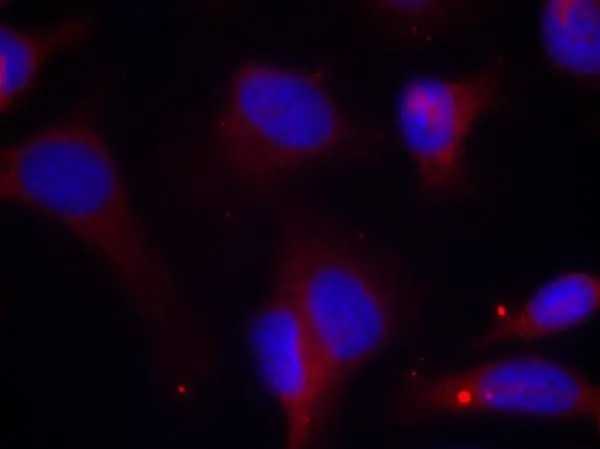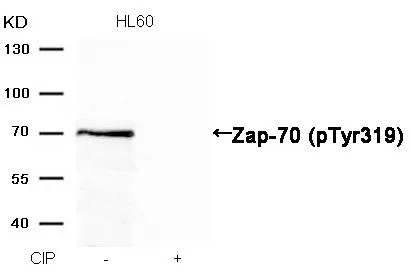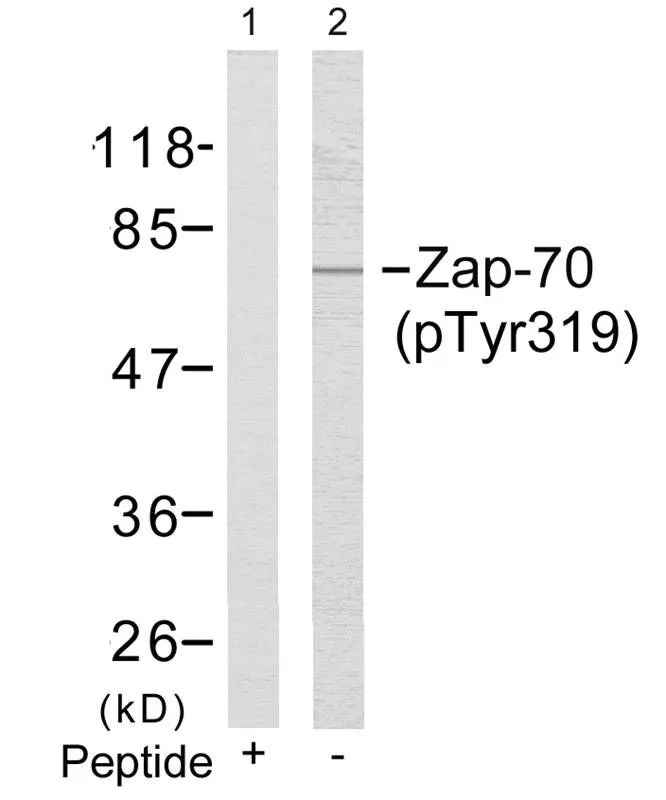
ICC/IF analysis of methanol-fixed HeLa cells using GTX50214 ZAP70 (phospho Tyr319) antibody.
ZAP70 (phospho Tyr319) antibody
GTX50214
ApplicationsImmunoFluorescence, Western Blot, ImmunoCytoChemistry
Product group Antibodies
ReactivityHuman
TargetZAP70
Overview
- SupplierGeneTex
- Product NameZAP70 (phospho Tyr319) antibody - Orthogonal Validated
- Delivery Days Customer9
- Application Supplier NoteWB: 1:500-1:1000. ICC/IF: 1:100-1:200. *Optimal dilutions/concentrations should be determined by the researcher.Not tested in other applications.
- ApplicationsImmunoFluorescence, Western Blot, ImmunoCytoChemistry
- CertificationResearch Use Only
- ClonalityPolyclonal
- Concentration1 mg/ml
- ConjugateUnconjugated
- Gene ID7535
- Target nameZAP70
- Target descriptionzeta chain of T cell receptor associated protein kinase 70
- Target synonyms70 kDa zeta-associated protein; 70 kDa zeta-chain associated protein; ADMIO2; IMD48; SRK; STCD; STD; syk-related tyrosine kinase; tyrosine-protein kinase ZAP-70; TZK; ZAP-70; zeta chain of T cell receptor associated protein kinase 70kDa; zeta-chain (TCR) associated protein kinase 70kDa; zeta-chain associated protein kinase, 70kD
- HostRabbit
- IsotypeIgG
- Protein IDP43403
- Protein NameTyrosine-protein kinase ZAP-70
- Scientific DescriptionThis gene encodes an enzyme belonging to the protein tyrosine kinase family, and it plays a role in T-cell development and lymphocyte activation. This enzyme, which is phosphorylated on tyrosine residues upon T-cell antigen receptor (TCR) stimulation, functions in the initial step of TCR-mediated signal transduction in combination with the Src family kinases, Lck and Fyn. This enzyme is also essential for thymocyte development. Mutations in this gene cause selective T-cell defect, a severe combined immunodeficiency disease characterized by a selective absence of CD8-positive T-cells. Two transcript variants that encode different isoforms have been found for this gene. [provided by RefSeq, Jul 2008]
- ReactivityHuman
- Storage Instruction-20°C or -80°C,2°C to 8°C
- UNSPSC12352203


